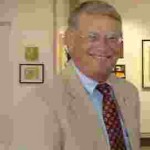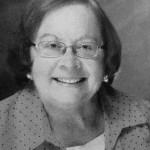Testing the whooping cough vaccine on Dr. Hugh Macdonald’s family in the sultry summer of 1933, an illegal abortion in the late 1890s and Peoria’s famous Gold Institute for rehabilitation from liquor, opium and tobacco addictions are all storied accounts woven into the rich medical history of the Peoria area.
“History of Medicine in Peoria from the 19th to the 20th Century” is a four-part lecture series in April at the Osher Lifelong Learning Institute, Bradley University, presented by Dr. Victoria Lorberg, M.D., and Dr. Richard Macdonald, D.P.M.
The two have both written books and spoken extensively about their work.
Lorberg experienced monumental change in the practice of medicine during her own career that spanned from Purdue University and Indiana University to the renowned Mayo Clinic in Minnesota where she was the first female physician in the hematology department. When she and her physician husband accepted positions in Peoria, she began learning and documenting the surprisingly rich medical history of Peoria . . . a largely untold story.
“When we moved here, I began to wonder why there was all this wonderful medicine here . . . why we were a major referral spot from Chicago to St. Louis,” Lorberg said. “To appreciate the present, we must learn from the past.”
Her book, “From Pest House to Medical Centers: Peoria’s Medical Journey into the 20th Century,” is based on primary research including city directories in the Peoria Historical Society collection at the Cullom-Davis Library, minutes from the Peoria City Medical Society and Peoria Public Library’s archived newspaper articles from the l800s. She spent a week at the Family History Library in Salt Lake City and interviewed the unofficial archivists at each of Peoria’s three hospitals.
She found that the city’s location as a river town on a major waterway was instrumental in the development of Peoria’s medical community and its early hospitals. Lorberg traced her medical detective story from Dr. Augustus Langworthy who arrived in Peoria in 1824 and was the only physician from Indiana to the Mississippi River and from Springfield to the Great Lakes. He made house calls as far away as Chicago.
Through research, she discovered Dr. Elias Cooper who arrived in Peoria in 1844 and by 1847 was using chloroform as an anesthetic. Cooper had a full surgical and teaching practice that resulted in a constant search for cadavers. That and other factors resulted in mounting friction with Peoria’s medical community. Cooper finally left Peoria for California where he founded the first medical school on the Pacific Coast, the predecessor for Stanford Medical School.
Lorberg said passengers on riverboats traveling up and down the Illinois River routinely drank river water, contracted cholera and were dropped off en route at hospitals in Peoria.
Co-teacher of the OLLI lecture series, Macdonald was himself a medical pioneer of sorts with his family history tied to the development of the whooping cough vaccine. His father, Dr. Hugh Macdonald, tested the vaccine on his wife and sons.
Macdonald graduated from Peoria public schools and the Illinois College of Podiatric Medicine. He earned surgical privileges at one Peoria hospital but filed a federal antitrust law suit against another hospital that refused to grant him full medical and surgical privileges. During his suit, which was settled in 1991, the number of podiatrists on hospital staffs more than doubled nationwide.
After retiring, Macdonald wrote his first book, “Inside the Gates: The Nazi Concentration Camp at Ebensee, Austria,” about his father’s experience as an Army doctor at the liberation of 17,000 people from a German concentration camp. He also wrote a children’s book, “The Whooping Cough Germ That Became a Hero,” now popular in pediatric offices. The book recounts the history of the development of the whooping cough vaccine.
Kathleen Sebelius, Secretary of Health and Human Services in Washington, D.C., wrote:
“As medical practitioners, your mother and father were instrumental in saving our next generation. They demonstrated immense courage in testing this whooping cough germ with ‘healing powers’ on their own sons and our nation is indebted to them. Through your book, you are continuing your family legacy, in helping to spread an important safety message in protecting our children. Keep up the great work!”
“History of Medicine in Peoria from the 19th to the 20th Century” will be taught from 2:00 to 3:00 p.m. April 2, 9, 16 and 23 at the Osher Lifelong Learning Institute, Bradley University. For more information call 677-3900 or enroll online at www.bradley.edu/olli.


